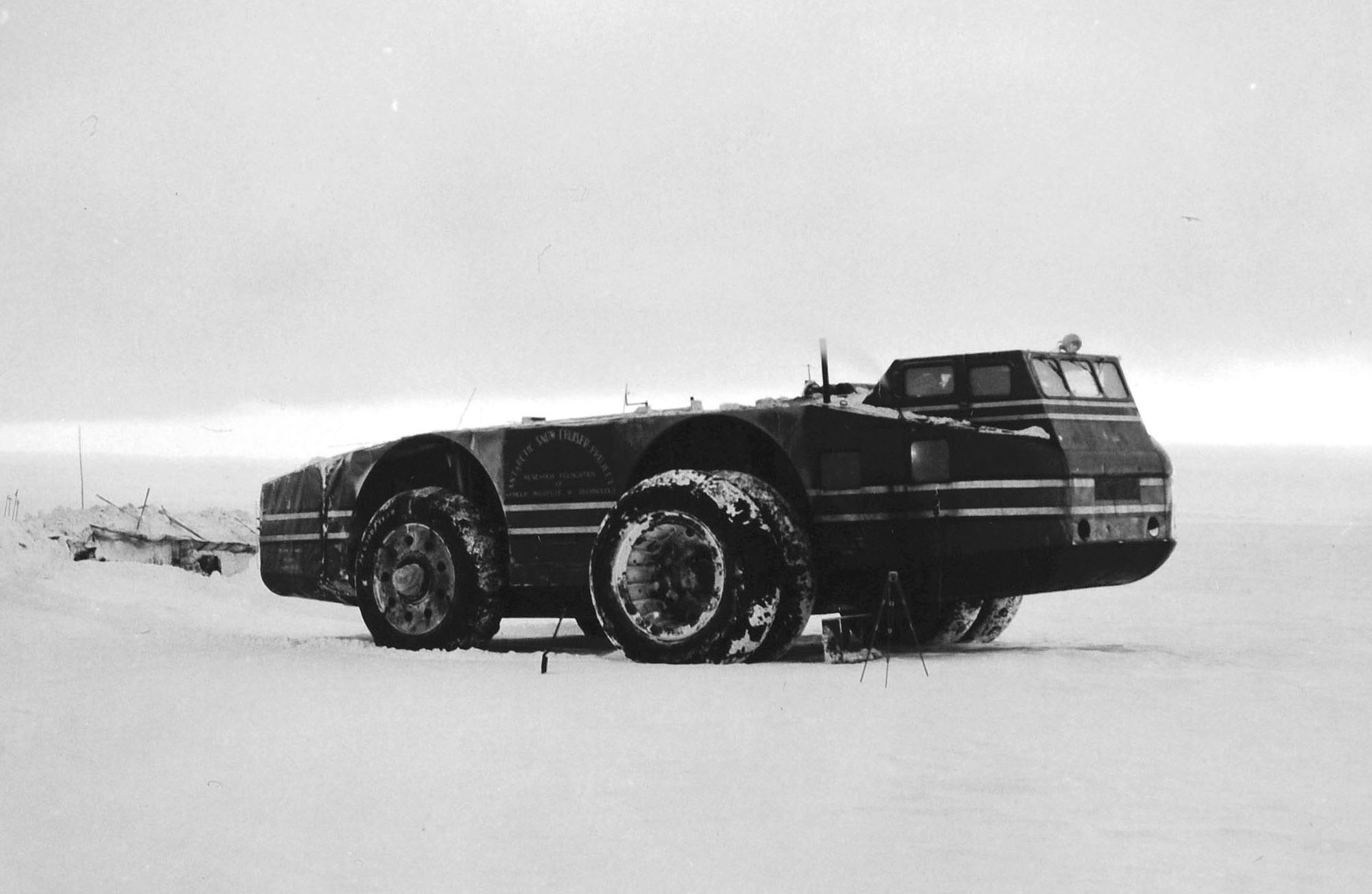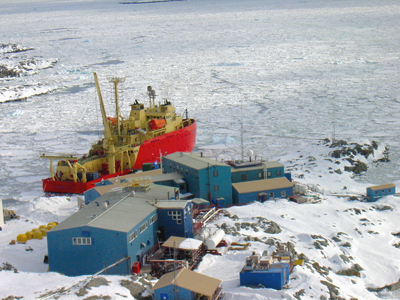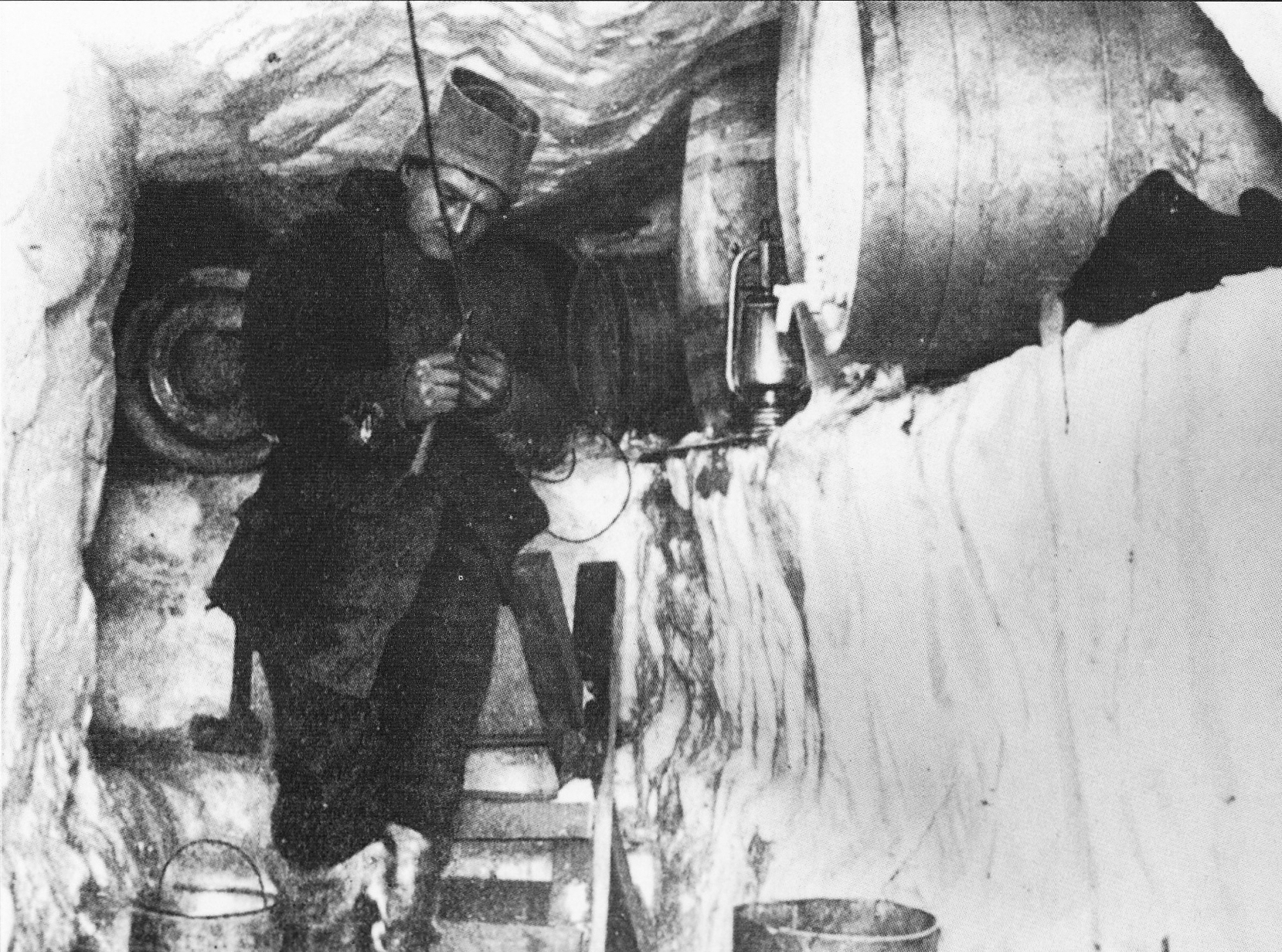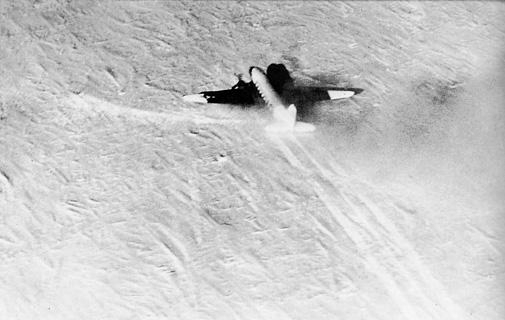|
Little America (exploration Base)
Little America was a series of Antarctica, Antarctic exploration bases from 1929 to 1958, located on the Ross Ice Shelf, south of the Bay of Whales. They were built on ice that is moving very slowly, the relative location on the ice sheet, has moved and eventually breaks off into an iceberg. The geographic location has new ice that has shifted to this location, and is technically over the open water. The coordinates are approximate. Little America I The first base in the series was established in January 1929 by Richard E. Byrd, Richard Byrd, and was abandoned in 1930. This was where the film ''With Byrd at the South Pole'' (1930), about Byrd's trip to the South Pole, was filmed. Little America II Little America II was established in 1934, some above the site of the original base, with some of the original base accessed via tunnel. This base was briefly set adrift in 1934, but the iceberg fused to the main glacier. During the 1934–1935 expedition, many souvenir letters ... [...More Info...] [...Related Items...] OR: [Wikipedia] [Google] [Baidu] |
Antarctic Snow Cruiser
The Antarctic Snow Cruiser was a vehicle designed under the direction of Thomas Poulter, intended to facilitate transport in Antarctica during the United States Antarctic Service Expedition (1939–41). The Snow Cruiser was also known as "The Penguin," "Penguin 1" or "Turtle" in some published material. Poulter had been second in command of Byrd's Second Antarctic Expedition, launched in 1934. From his time in the Antarctic, Poulter had devised several innovative features. The massive Snow Cruiser generally failed to operate as hoped under the difficult conditions (the tires, notably smooth to avoid becoming snow encrusted, did not grip the ice) and was eventually abandoned in Antarctica. Rediscovered under a deep layer of snow in 1958, it later disappeared again due to shifting ice conditions. Its whereabouts have been unknown since then. History Design and construction On April 29, 1939, Poulter and ''The Research Foundation of the Armour Institute of Technology'' showed ... [...More Info...] [...Related Items...] OR: [Wikipedia] [Google] [Baidu] |
Research Stations In Antarctica
Multiple governments have set up permanent research stations in Antarctica and these bases are widely distributed. Unlike the drifting ice stations set up in the Arctic, the current research stations of the Antarctic are constructed either on rocks or on ice that are (for practical purposes) fixed in place. Many of these stations are demographics of Antarctica, staffed throughout the year. Of the 56 signatories to the Antarctic Treaty System, Antarctic Treaty, a total of 55 countries (as of 2023) operate seasonal (summer) and year-round research stations on the continent. The number of people performing and supporting scientific research on the continent and nearby islands varies from approximately 4,800 during the summer to around 1,200 during the winter (June). In addition to these permanent stations, approximately Antarctic field camps, 30 field camps are established each summer to support specific projects. History First bases During the Heroic Age of Antarctic Explo ... [...More Info...] [...Related Items...] OR: [Wikipedia] [Google] [Baidu] |
Seabee
United States Naval Construction Battalions, better known as the Navy Seabees, form the U.S. Naval Construction Forces (NCF). The Seabee nickname is a heterograph of the initial letters "CB" from the words "Construction Battalion". Depending upon context, "Seabee" can refer to all enlisted personnel in the USN's occupational field 7 (OF-7), all personnel in the Naval Construction Force (NCF), or Construction Battalion. Seabees serve both in and outside the NCF. During World War II they were plankowner, plank-holders of both the Naval Combat Demolition Units and the Underwater Demolition Teams (UDTs). The men in the NCF considered these units to be "Seabee". In addition, Seabees served as elements of Cubs, Lions, Acorns and the United States Marine Corps. They also provided the manpower for the top secret CWS Chemical Warfare Service: Flame Tank Group Seabees, Flame Tank Group. Today the Seabees have many special task assignments starting with Camp David and the Naval Support ... [...More Info...] [...Related Items...] OR: [Wikipedia] [Google] [Baidu] |
Palmer Station
Palmer Station is a United States research station in Antarctica located on Anvers island (aka Antwerp Island), the only U.S. station on the continent located north of the Antarctic Circle. The first Palmer was built in 1965, but the current site, near to the older one, had its initial construction of the station finished in 1968. The station, like the other U.S. Antarctic stations, is operated by the United States Antarctic Program (USAP) of the National Science Foundation. The base is much smaller than McMurdo, with about 40 staff, and is focused on marine and biology research such as seabirds and plankton. It also supports the RN73 site for atmospheric monitoring for radionuclides. The base is about as distant from the equator as Fairbanks, Alaska in the northern hemisphere, whereas Palmer is in the southern hemisphere. Under the Antarctica Treaty System established in 1958, the base is neither a claim nor a forfeiture of the right to do so. There are several old claims in t ... [...More Info...] [...Related Items...] OR: [Wikipedia] [Google] [Baidu] |
List Of Antarctic Expeditions
This list of Antarctica expeditions is a chronological list of expeditions involving Antarctica. Although the existence of a southern continent had been hypothesized as early as the writings of Ptolemy in the 1st century AD, the South Pole was not reached until 1911. Pre-exploration theories * 600 BC – 300 BC – Greek philosophers theorize Spherical Earth with North and South Polar regions. * 150 AD – Ptolemy published '' Geographia'', which notes Terra Australis Incognita. Pre-19th century * 13th century – Polynesians settle Auckland Islands (50° S) * 1501–1502 – Gonçalo Coelho and Amerigo Vespucci possibly sail to (52° S) * 1522 – Juan Sebastián de El Cano – first circumnavigation Fernando de Magallanes discovers Strait of Magellan (54° S) * 1526 – Francisco de Hoces reportedly blown south from Strait of Magellan to (56° S). He discovers the Drake Passage or Mar de Hoces. * 1578 – Francis Drake claims to have discovered an ... [...More Info...] [...Related Items...] OR: [Wikipedia] [Google] [Baidu] |
Framheim
Framheim was the name of explorer Roald Amundsen's base at the Bay of Whales on the Ross Ice Shelf in Antarctica during his successful quest for the South Pole. It was used between January 1911 and February 1912. Cabin and tents The hut was constructed in sections by a master carpenter, Jørgen Stubberud and erected at Amundsen's home in Norway, then dismantled for shipment to Antarctica on the '' Fram''. Framheim literally means "home of the Fram". During its construction in Norway, Amundsen maintained that the hut was for "observation", which would fit in nicely with his supposed intent to head to the North Pole. To the more than casual student of exploration, it was obvious that the hut was intended as living quarters. Amundsen was headed to the South Pole. The cabin was an early example of a pre-fabricated structure, and employed a custom dining table which could retract to the ceiling for cleaning beneath. It measured eight by four meters, and the walls were made up of fo ... [...More Info...] [...Related Items...] OR: [Wikipedia] [Google] [Baidu] |
Dean Cullom Smith
Dean Cullen Smith (September 27, 1899 – March 4, 1987) was a pioneer American mail pilot, test pilot, flying instructor, Antarctic pilot, and airline pilot. At 17 years of age, he became the youngest flight instructor in U.S. Army history. He was a lead pilot for the U.S. Postal Service's airmail service, and was the first pilot to initiate night air mail flights. He was an executive for many airlines and aircraft companies. Smith was a pilot for the Byrd Antarctic Expedition of 1928–1930 involved in aerial overflights to discover new land that could be claimed for the benefit of the United States. The land was later viewed by Byrd and named after his wife. Smith was awarded the Distinguished Flying Cross and the Congressional Gold Medal. An Antarctic peak bears his name. He was inducted into the New Jersey Aviation Hall of Fame in 1986. Early life and education Smith was born in Cove, Oregon, on September 27, 1899 at his grandparents home. His parents were Joshua Cullow ... [...More Info...] [...Related Items...] OR: [Wikipedia] [Google] [Baidu] |
Brockton Station (Antarctica)
Brockton Station was an American research (weather) station in Antarctica. It was built by the Seabees and operated by the US Navy during the summer months from October 1965 to February 1972. The station was located southeast of McMurdo Station, near the center of the Ross Ice Shelf. The station was located at 80.02oS 178.42oW and the Antarctic Meteorological Research Center in collaboration with the National Climate Data Center have made the meteorological data available. See also * List of Antarctic field camps *Byrd Station * Dean Cullom Smith *Ellsworth Station * Framheim * Hallett Station *List of Antarctic expeditions *McMurdo Station *Operation Deep Freeze * Palmer Station * Plateau Station *Research stations in Antarctica * Siple Station *South Pole Station South is one of the cardinal directions or compass points. The direction is the opposite of north and is perpendicular to both west and east. Etymology The word ''south'' comes from Old English ''sūþ'', f ... [...More Info...] [...Related Items...] OR: [Wikipedia] [Google] [Baidu] |
Antarctic Field Camps
Many research stations in Antarctica support satellite field camps which are, in general, seasonal camps. The type of field camp can vary – some are permanent structures used during the annual Antarctic summer, whereas others are little more than tents used to support short term activities. Field camps are used for many things, from logistics (Sky Blu (Antarctica), Sky Blu) to dedicated scientific research (WAIS Divide Field Camp). List of field camps See also *Research stations in Antarctica *Demographics of Antarctica *List of Antarctic expeditions *Transport in Antarctica References * * {{cite web , url=https://www.comnap.aq/publications/maps/comnap_map_edition5_a0_2009-07-24.pdf , title=COMNAP Antarctic Facilities Map , archive-url=https://web.archive.org/web/20090915110710/https://www.comnap.aq/publications/maps/comnap_map_edition5_a0_2009-07-24.pdf , archive-date=September 15, 2009 Outposts of Antarctica, Antarctica-related lists, Field camps ... [...More Info...] [...Related Items...] OR: [Wikipedia] [Google] [Baidu] |
Byrd Station
The Byrd Station is a former research station established by the United States during the International Geophysical Year by U.S. Navy Seabees during Operation Deep Freeze II in West Antarctica. It was a year-round base until 1972, and then seasonal up to 2005. The station was built in 1957, and is located on the West Antarctic ice cap. It was accessible by overland ice traverse or by ski-equipped C-130 aircraft. History A joint Army, Navy, Air Force, and Marines operation supported an overland tractor train traverse that left out of Little America V in late 1956 to establish the station. The train was led by Army Major Merle Dawson and completed a traverse of over unexplored country in Marie Byrd Land to blaze a trail to a spot selected beforehand. The station consisted of a set of four prefabricated buildings and was erected in less than one month by U.S. Navy Seabees. It was commissioned on January 1, 1957. The original station ("Old Byrd") lasted about four years befo ... [...More Info...] [...Related Items...] OR: [Wikipedia] [Google] [Baidu] |
Ellsworth Station
Ellsworth Scientific Station (, or simply ''Estación Ellsworth'' or ''Base Ellsworth'') was a permanent, all year-round originally American, then Argentine Antarctic scientific research station named after American polar explorer Lincoln Ellsworth. It was located on Gould Bay, on the Filchner Ice Shelf. It was shut down in 1962 over safety concerns due to it being built on increasingly unstable ice, which produced fast deterioration of its superstructures and endangered both personnel and equipment. History Ellsworth Station was built by United States Navy Seabees under the command of Captain Finn Ronne, with the support of the icebreakers USS ''Staten Island'' and USS ''Wyandot'', captained by Francis Gambacorta. The originally planned site for the station was Cape Adams, but when the terrain proved impractical due to huge ice cliffs, an alternate location on Gould Bay was selected, on the western coast of the Weddell Sea over the Filchner Ice Shelf, and close to the Arg ... [...More Info...] [...Related Items...] OR: [Wikipedia] [Google] [Baidu] |
Amundsen–Scott South Pole Station
The Amundsen–Scott South Pole Station is a science and technology in the United States, United States scientific research station at the South Pole of the Earth. It is the List of extreme points of the United States, southernmost point under the jurisdiction (not sovereignty) of the United States. The station is located on the high Antarctic Plateau, plateau of Antarctica at above sea level. It is administered by the Office of Polar Programs of the National Science Foundation, specifically the United States Antarctic Program (USAP). It is named in honor of Norwegian Roald Amundsen and Briton Robert Falcon Scott, Robert F. Scott, leaders of the competing first and second expeditions to reach the pole, in the summer of 1911–1912. The original Amundsen–Scott Station was built by Seabee, Navy Seabees for the federal government of the United States during November 1956, as part of its commitment to the Science, scientific goals of the International Geophysical Year, an ef ... [...More Info...] [...Related Items...] OR: [Wikipedia] [Google] [Baidu] |








